Architectural Carvings Page 2
| Architectural Page 1 | Architectural Page 2 |
Architectural carving involves decorative features in homes or buildings including moldings, corbels, mantles, railings, facades, and other features adorned with details.
Artisans can carve your existing solid wood posts, or custom design and create unique solid wood posts. The posts below were produced from scratch by special commission - designed by our client this original conception was turned over to our sister shop, Customer Creations, to be converted from a 2D CAD drawing to a 3D rendering which was then CNC carved creating a near complete post.
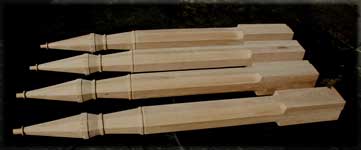
The posts were then hand finished by Artisans of the Valley using a variety of hand carving tools and scrapers to create a period texture and finish. More photos will follow soon including some final shots of the finished staircase.
Anyone can select from hundreds of commercially available profiles for posts, but when it comes to something truly enough a custom commission is required. We're not going to kid anyone about this type of commission; designing and cutting custom stair posts is a tedious and time intensive process.
These posts started as a figment of someone's imagination, from their they become a sketch which is turned into CAD drawing. Next they go through a conversion to 3D with various modeling software. They are broken into sections, angles are set, points in space are chosen for zero references, the whole thing is then rendered into a 3D model.
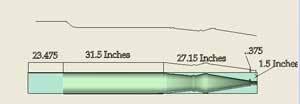
That is followed by a slicing program that separated the design into layers within the limitations of the CNC machine. Bits are selected to rough and other bits are selected to detail. After that tool paths are generated - and then the programming is set to to start cutting simulations.
Inevitably simulations lead to finding issues which must be resolved in the profile or the 3D model. Then - go back through the whole rendering, slicing, tool path, and simulation phase until the test results are successful and all the movements of the CNC machine are within the capabilities of the machine.
Then comes cutting in a foam model - a required phase to assure that the simulations were on the mark. Bumping foam is a lot less expensive than bumping solid oak. Let's make a long story short - a frequency drive router designed for high RPM on a CNC carriage runs about $10,000 - one bump into oak and said router is now a very expensive and poorly functioning boat anchor.
 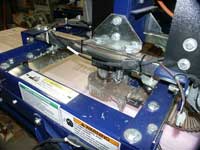 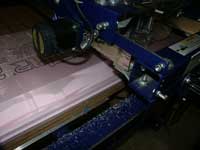 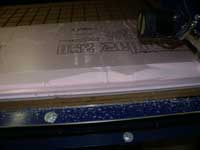   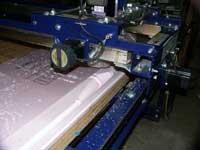 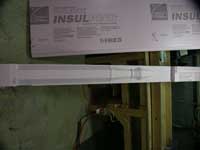
Foam proofs are an absolute requirement in this process - one to start - and at least one for every change in design or specifications made through the process. We'll show you more photos of this process shortly - as well as examples of the various steps in the programming process. We are shipping you a few from an inventory - we're making the prototypes for your commission!
That's just the beginning - now that the programming is finished, the cutting begins. Material is prepped, planed and sanded ready to be mounted on the CNC bed. Hours of cutting is often required and several bit changes may be necessary to complete each slice.
When the slices are complete - they must be removed from their supporting frames and glued up to create the final 3D piece. The now ruff full scale posts are then cleaned up further to remove remnants of the frames used to align the layers during glue up.
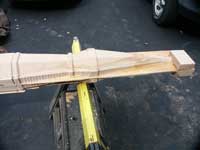 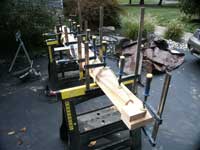 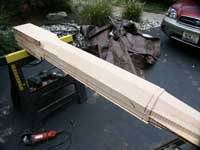
Below - A stair post after final glue up with rough cleanup complete. This phase finally shows a post close to its final form.
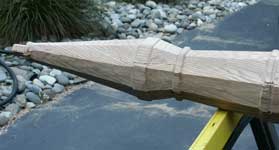  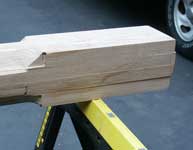
These are the posts after their cleanup is complete. all the joints for mounting the rails must be cut by the installer. Final sanding and surface prep is required,and then finishing can begin.
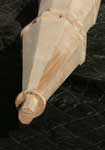 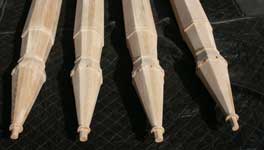    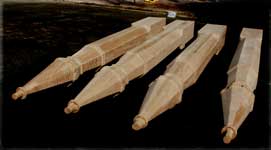 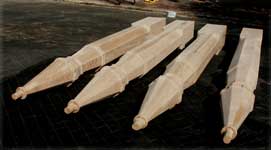 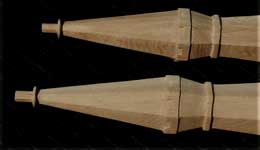
Once installed these unique posts provide a solid anchor point for each turn this staircase takes. Check back soon for finished photos!
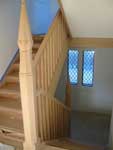 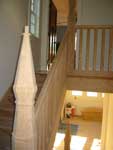 
|


